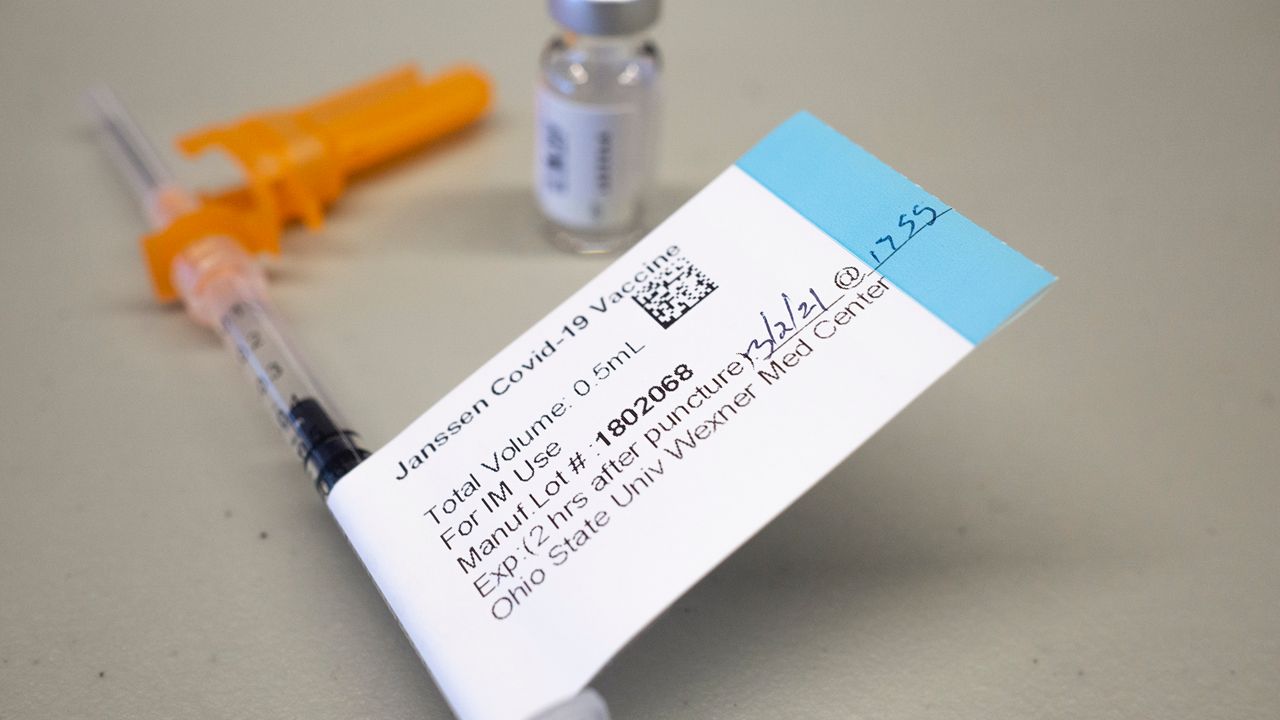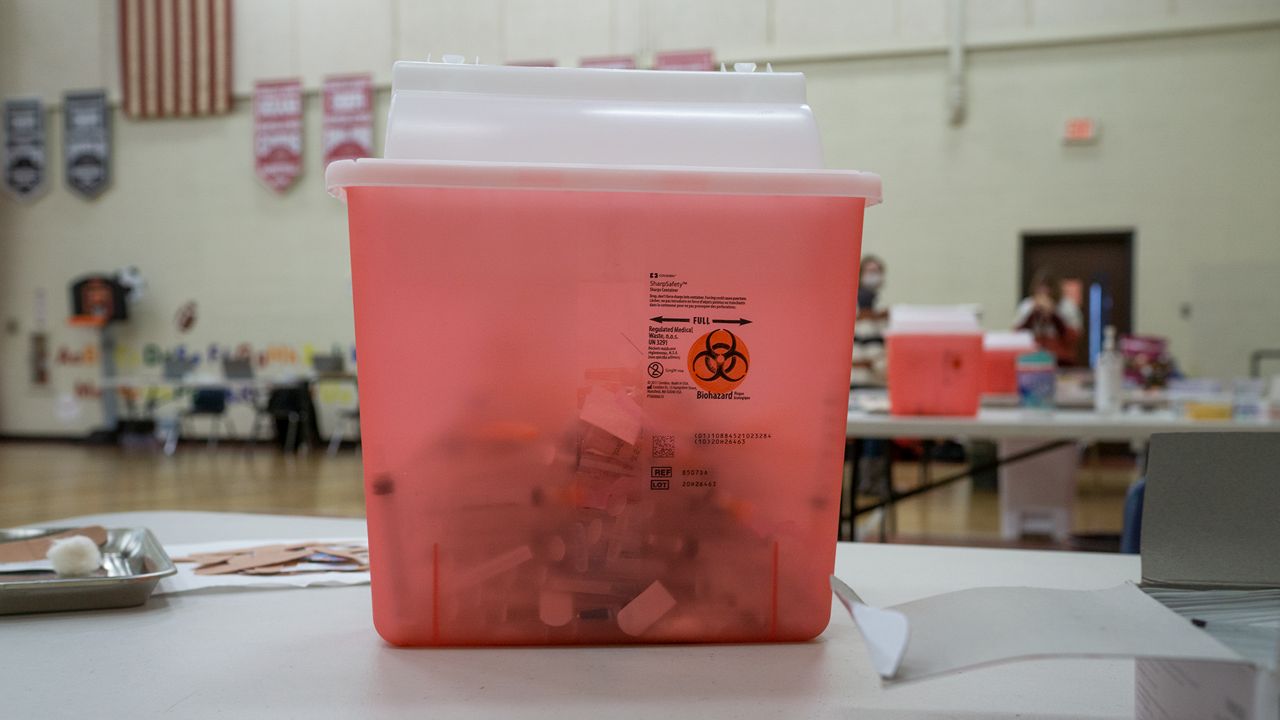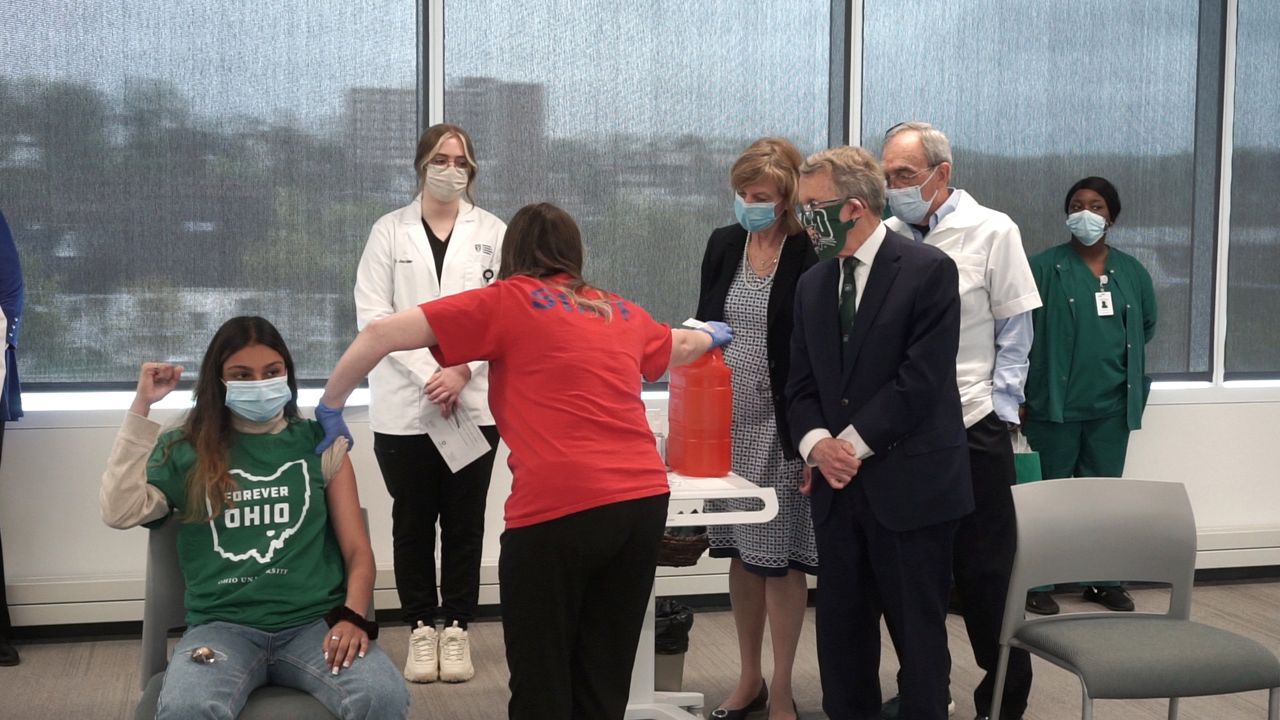COLUMBUS, Ohio — Distribution of the single-shot Johnson & Johnson adenovirus vaccine will resume after officials reauthorized the vaccine Friday evening.
What You Need To Know
- The J&J vaccine has some advantages as a single-shot immunization
- The pace of vaccinations has slowed in the U.S., in part because of the J&J pause
- An advisory committee recommended the vaccine for use after reviewing reports of rare blood clots
The Centers for Disease Control and Prevention's advisory panel recommended Friday that deployment of the J&J vaccine continue with a warning label, and federal agencies concurred.
The Johnson & Johnson vaccine was paused in the U.S. on April 13 when officials reported six women had suffered blood clots, including one death. On Friday, officials said the numbers had risen to 15 clots and three deaths.

Despite the pause and the growing availability of mRNA vaccines in the U.S., the resumption of the Johnson & Johnson vaccine could be critical as states work to efficiently vaccinate hard-to-reach populations, said Dr. Jennifer Hanrahan, the chief of infectious disease at the University of Toledo College of Medicine and Life Sciences and hospital epidemiologist at ProMedica.
“Our vaccine adverse event reporting system worked, and it found these rare instances of very serious side effects,” Hanrahan said.
She explained that when J&J resumes, no one will have to take it, as there are enough Pfizer and Moderna doses in the U.S. for Americans to have vaccine choice.
“These were incredibly rare events. For the people that this happened to, I am not in any way minimizing it — they were horrible,” Hanrahan said. “But we have ample data, and failing to get a vaccine at this point in time is prolonging the pandemic."
In a 10 to 4 vote with one abstention, the Advisory Committee on Immunization Practices, an independent panel, recommended use of the vaccine after meeting Friday to review rare blood clotting in vaccine recipients.
Dr. Bruce Vanderhoff, Ohio’s chief medical officer, told reporters during a virtual news conference Friday afternoon a restart of J&J would provide people with greater vaccine choice.
“I really look forward to the availability of J&J back among the choices for Ohioans," Vanderhoff said. "I've heard from so many individuals who really prefer that as their vaccine option. There are many people who would much rather have a one and done vaccination."
The state announced Friday evening its vaccinators are permitted to immediately resume administering J&J vaccines, and health care providers are receiving guidance on treatment methods for the rare blood clot events — thrombosis with thrombocytopenia syndrome. "A comprehensive analysis by the independent medical professionals on the ACIP has resulted in the recommendation that the benefits of Johnson & Johnson vaccine outweigh the risks, and that vaccine administration resume," Gov. Mike DeWine said in a statement.
Ohio providers have used the vaccine — which only requires refrigeration — to hold mobile clinics or immunize unique populations, including students leaving town for summer break, homeless residents, individuals being discharged from the hospital and incarcerated people. The state said details about the restart of J&J clinics, including mass vaccination sites, were not yet available.
.@ColumbusHealth will follow the guidance of the @CDCgov, @US_FDA and @OhDeptofHealth to begin distributing the Johnson & Johnson vaccine as soon as possible. Please continue to check our website and social media for updates on J&J vaccine registration
— Mysheika Roberts, MD, MPH (@DrMRoberts) April 24, 2021
CDC Director Rochelle Walensky told reporters in a press briefing Friday the CDC and Food and Drug Administration acted swiftly after the committee vote, sharing that governors had made strong calls to quickly resume vaccination.
“They wondered why we had paused and they were anxious to have this back, have an opportunity for a single-dose vaccine,” Walensky said. “The American public should feel reassured about the safety systems and protocols that we have been placed around the COVID-19 vaccine. Our systems helped identify incredibly rare events."
Walensky said the CDC has been educating health care providers about how to treat the clots.
In the U.S., there are currently 10 million J&J shots awaiting arms once the pause is lifted, according to data from the CDC. Lingering questions remain about the future of J&J supply due to disruption in Baltimore, where Emergent BioSolutions was working on J&J production.
In the ongoing effort to overcome vaccine resistance, officials hope a restart of the J&J vaccine will boost immunization rates.

“Vaccine hesitancy is the single biggest problem that we have right now,” Hanrahan said. “The people that are not getting vaccinated right now are making the choice to prolong this, and that is disturbing."
Hanrahan said the majority of patients who are hospitalized with COVID-19 were eligible to be vaccinated by now but did not get the shot when it became their turn. Even young people are vulnerable, she said, explaining she has multiple COVID-19 patients in their 30s fighting for their lives on ventilators.
Hanrahan said the success of vaccine manufacturers including J&J will be pivotal in the efforts to slow the pandemic globally.
“The big picture is that coronavirus is an ongoing pandemic in the entire world. India appears to be having serious problems. Brazil is running out of health resources," she said. “The more replication of this virus there is, the more opportunity there is for spread, the more likely that we're going to continue to have variants, and the more likelihood there is the vaccines will be less effective.”



